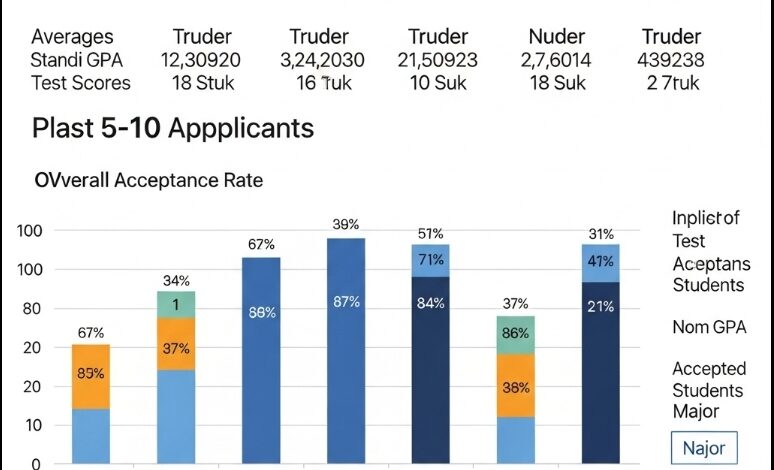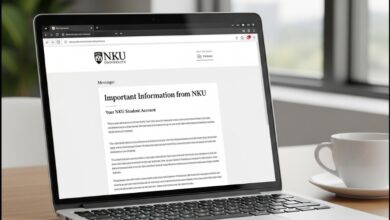Acceptance Rate at Arizona State University
Understanding the Acceptance Rate at Arizona State University (And What It Really Means for You)

Acceptance Rate at Arizona State University
Unlocking Your Future: Understanding the Acceptance Rate at Arizona State University (And What It Really Means for You)
Dreaming of sun-drenched campuses, cutting-edge innovation, and a vibrant, diverse student community? Arizona State University (ASU) consistently tops lists as one of the most innovative universities in the U.S. and attracts students globally. But a crucial question for any prospective student, especially those navigating international applications, is: “What are my actual chances of getting in?” Understanding the acceptance rate at Arizona State University is your first step, but it’s only part of the story. Let’s dive deep into what the numbers mean, what ASU really looks for, and how you can position yourself for success.
Demystifying the Acceptance Rate at Arizona State University: The Big Picture
Let’s address the headline figure directly. For Fall 2023, the overall acceptance rate at Arizona State University was approximately 89.8%. This means ASU admitted nearly 9 out of every 10 applicants. Compared to the ultra-selective single-digit rates of Ivy League schools or even some flagship state universities (like UCLA or UNC-Chapel Hill, often below 20%), ASU’s acceptance rate is notably high.
Why is it higher? ASU embraces a core philosophy of accessibility and inclusion. Its mission, under the banner of the “New American University,” is to provide high-quality education to as many qualified students as possible, not to exclude based on arbitrary scarcity. This doesn’t mean lowered standards; it means a broader, more holistic view of student potential and a commitment to serving the diverse population of Arizona and beyond.
What does a 90% acceptance rate not mean?
It does not mean automatic admission for everyone, regardless of qualifications.
It does not mean the university lacks rigor or prestige (ASU is a top-ranked R1 research institution).
It does not mean all programs are equally easy to enter (more on that later).
The Takeaway: The acceptance rate at Arizona State University signals an accessible pathway to a world-class education. It means if you meet their core academic standards and demonstrate readiness, you have a very strong chance of being welcomed into the Sun Devil community.
Beyond the Overall Number: Factors Influencing Your Personal Acceptance Rate at Arizona State University
While the overall rate is high, your individual chances hinge on several specific factors. ASU evaluates applications holistically, meaning they look at the whole picture, not just one number:
Academic Performance (The Foundation):
High School GPA: This is the single most significant factor. For Fall 2023 admitted freshmen:
The average high school GPA was 3.54 (weighted).
The middle 50% range was roughly 3.3 – 4.0. This means 25% had GPAs below 3.3, and 25% had GPAs of 4.0 or higher.
Rigor of Coursework: ASU values students who challenge themselves. Taking Honors, AP, IB, or dual-enrollment courses significantly strengthens your application, even if your GPA isn’t a perfect 4.0. Success in core academic subjects (Math, English, Science, Social Studies, Foreign Language) is critical.
Class Rank: While considered, it’s less emphasized than GPA and rigor, especially as not all high schools rank.
Standardized Testing (Test-Optional Reality):
ASU is test-optional for admission and merit scholarships. You are not required to submit SAT or ACT scores.
If you submit scores (Fall 2023 mid-range):
SAT: 1120 – 1360 (Evidence-Based Reading and Writing + Math). The average was around 1240.
ACT: 21 – 28 Composite. The average was around 25.
Should you submit? Generally, submit scores if they fall within or above ASU’s middle 50% range, as they can strengthen your application, especially for merit scholarships or if your GPA is towards the lower end of the admitted range. If your scores are below the middle 50%, going test-optional is a strategic choice.
Residency Status: The acceptance rate at Arizona State University is generally similar for in-state and out-of-state/international students who meet the core competencies. However, ASU has a mandate to serve Arizona residents, so a larger proportion of the entering class typically comes from within the state. Meeting the academic requirements is key regardless of residency.
Choice of Major and Campus:
Barrett, The Honors College: This is highly selective. The acceptance rate for Barrett is significantly lower than the overall university rate, often estimated in the 15-25% range. It requires a separate application with essays, letters of recommendation, and demonstration of exceptional academic achievement and intellectual curiosity.
Specific Programs: While most undergraduate majors admit students directly based on university standards, some highly competitive programs (e.g., specific Engineering disciplines, Architecture, Nursing, some programs in the Herberger Institute for Design and the Arts) may have additional requirements, prerequisites, or limited capacity, making admission into that specific major more selective even after general university admission.
Campus: Admission standards are generally consistent across the four Phoenix-area campuses (Tempe, Downtown Phoenix, Polytechnic, West) for most majors. However, some majors are only offered at specific campuses.
What the Acceptance Rate at Arizona State University Means for International Students
ASU is a global university, welcoming over 16,000 international students from more than 160 countries. The principles of accessibility apply equally:
Meeting Core Competencies: International students must demonstrate equivalent academic preparation. This includes:
Strong performance in a rigorous college-preparatory secondary school curriculum.
Meeting English language proficiency requirements (TOEFL iBT 61+, IELTS 6.0+, PTE Academic 53+, Duolingo 95+). Some programs require higher scores.
Equivalent GPA standards (transcripts evaluated by credential services).
Holistic Review: ASU considers the context of your education system. Strong grades in challenging courses within your national curriculum are valued.
Financial Documentation: Proof of sufficient funds to cover the first year of study is required for the I-20 form after admission.
The Advantage: The relatively high acceptance rate at Arizona State University means that well-qualified international students with strong academic records and English proficiency have an excellent chance of admission. Google reviews and student forums often highlight ASU’s supportive international student services and diverse campus environment.
Comparing the Acceptance Rate at Arizona State University: Context is Key
Understanding ASU’s position requires looking at peers:
University of Arizona (UArizona): UArizona’s overall acceptance rate is also relatively high, typically in the 80-90% range. Both prioritize access within the Arizona system. The choice often comes down to specific programs and campus culture preference.
Other Large Public Universities (Out-of-State): Universities like University of Central Florida (UCF – ~40%), University of South Florida (USF – ~40%), or Ohio State University (OSU – ~50-60%) often have lower overall acceptance rates for out-of-state students compared to ASU’s rate for all applicants. ASU’s commitment to access extends broadly.
Selective Private/Flagship Publics: Schools like USC (~10%), UCLA (~9%), University of Michigan (~18%), or UT Austin (~30%) have significantly lower acceptance rates, reflecting a different admissions philosophy focused on higher selectivity.
The Verdict: ASU’s high acceptance rate reflects its mission, not its quality. It offers a prestigious, innovative education to a broader range of qualified students.
Understanding ASU’s “Competitive” vs. “Assured” Admission
ASU uses two primary admission pathways:
Assured Admission: If you meet all of the following criteria, you are guaranteed admission:
Top 25% in high school graduating class, OR
3.00 GPA in competency courses (Arizona residents: 16 core courses; Non-residents: 15 core courses), OR
24 ACT score (1180 SAT) combined with a 3.00 GPA in competency courses.
Note: Assured admission is to the university, not necessarily to specific competitive majors or Barrett.
Competitive Admission: If you don’t meet the assured requirements, you can still apply! ASU reviews these applications holistically, considering:
Strength of overall academic coursework.
Grades in specific competency areas.
Grade trends (improvement is positive!).
Class rank (if available).
Standardized test scores (if submitted).
Personal statements (though not always required, submitting one can help explain context or highlight strengths).
Extracurricular activities, work experience, leadership.
This is where the holistic review shines. A student with a GPA slightly below 3.0 but strong upward trends, challenging courses in key subjects, and compelling life experiences might still be admitted competitively. This flexibility contributes to the overall higher acceptance rate at Arizona State University.
Applying to ASU: Strategies for Success Beyond the Acceptance Rate
Knowing the acceptance rate at Arizona State University is encouraging, but focus on building the strongest application possible:
Focus on Your Grades: Prioritize your GPA, especially in core academic subjects. Consistent effort throughout high school matters.
Challenge Yourself: Enroll in the most rigorous courses available where you can succeed (AP, IB, Honors, dual enrollment). An ‘A’ in a regular class is good; a ‘B’ in an AP class often demonstrates more valuable effort.
Consider Test Scores Strategically: If your SAT/ACT scores are strong (within or above ASU’s mid-50%), submit them. If not, confidently apply test-optional. Focus your energy where it counts most – your grades.
Apply Early: ASU offers rolling admission, but applying early (especially by November 1st for priority scholarship consideration) is always beneficial. It shows interest and gets your application reviewed sooner.
Complete the Application Thoroughly: Pay attention to details. List all relevant activities and honors. Consider the Personal Statement: While not always mandatory for general admission, it’s REQUIRED for Barrett and competitive majors, and HIGHLY recommended for anyone applying competitively or wanting scholarship consideration. Use it to:
Explain any dips in grades or extenuating circumstances.
Highlight your unique experiences, perspectives, or passions.
Demonstrate your writing skills and intellectual curiosity.
Show why ASU is the right fit for your goals.
Demonstrate English Proficiency (International Students): Meet the required scores well before application deadlines.
Life After Admission: Thriving at ASU
Getting in is just the beginning! The high acceptance rate at Arizona State University fosters an incredibly diverse and dynamic campus environment. Here’s what students often highlight (based on Google reviews, Niche, and student testimonials):
Vast Opportunities: Massive range of majors, minors, clubs, research projects, internships (especially in Phoenix’s growing economy), and study abroad programs.
Innovation Focus: Cutting-edge facilities, entrepreneurial spirit, and interdisciplinary learning are woven into the fabric.
Sun Devil Spirit: Energetic campus life, strong school pride, big-time NCAA Division I athletics (Go Devils!).
Support Systems: Extensive academic support (tutoring, writing centers), career services, health and wellness resources, and dedicated international student support.
The Arizona Advantage: Sunshine year-round, stunning desert landscapes, access to hiking, cultural events, and a relatively affordable major metropolitan area (compared to coastal cities).
Challenges mentioned include: The sheer size of the university can feel overwhelming initially; requires proactive engagement. Tempe campus is large and requires walking/biking/bussing. Summer heat is intense. Some large introductory lecture classes.
Conclusion: The Acceptance Rate at Arizona State University – Your Gateway to Opportunity
The acceptance rate at Arizona State University, hovering around 90%, is a beacon of accessibility in the often-daunting world of higher education. It signifies ASU’s unwavering commitment to making a high-quality, innovative education attainable for a broad spectrum of qualified students, both domestic and international.
Don’t mistake accessibility for lack of excellence. ASU is a powerhouse – a top-ranked research university (R1 status) driving innovation in fields from sustainability to space exploration. It offers unparalleled resources, a dynamic and diverse community, and a location in a thriving Sun Belt metropolis.
Your key takeaway: If you have demonstrated solid academic preparation (meeting or closely approaching the core competency/GPA standards), the acceptance rate at Arizona State University means your dream of becoming a Sun Devil is highly achievable. Focus on maintaining strong grades, challenging yourself appropriately, and presenting a complete application. ASU isn’t looking for reasons to exclude you; they’re looking for reasons to welcome you into their vibrant community of learners, innovators, and future leaders. Take the step, apply with confidence, and get ready to unlock your potential under the Arizona sun!





